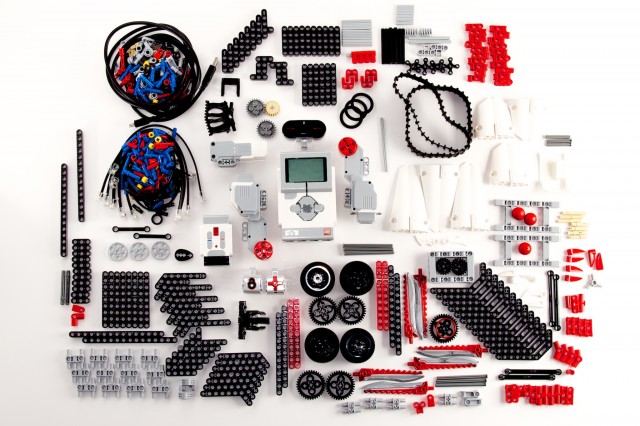
Gummi Bears. That's what playing with Lego bricks reminds me of—sitting cross-legged on the floor in the back room of my parents' house on Saturday mornings, a giant tub of Lego pieces open in front of me while animated bears bounced here and there and everywhere. I had my own Saturday morning cartoon routine, and when Gummi Bears came on, it was time to build with Lego bricks.
It's been a long time—probably 20 years, at least—since I sat down with a giant bunch of Lego bricks in front of me, but last week I had a chance to re-experience a small bit of my childhood with a whole new set of Lego pieces: the unreleased Lego Mindstorms EV3.
Robotron 2013
A lot has happened since the last time I pieced together plastic spaceships. Back then, the most complex type of Lego sets you could buy were the Technic sets, which mixed together the standard studded bricks and more complex pieces with fitted pegs and holes and gears. If you wanted to build awesome imaginary starships, you bought Lego Space sets. If you wanted to build actual machines that moved around on their own power, you bought Technic.
But Lego evolves with the times. In the 1990s, the line of Lego products gained a new top-end: the Mindstorms sets. The Technic line is still thriving, but Mindstorms go beyond Technic and include that most irresistible variety of geek candy: sensors and programmable controllers. This is way past anything I ever got my hands on when I was a wee lad.
The newest generation of Mindstorms, the EV3, has capabilities that would have blown my mind back in the mid-'80s (if a set could have been sent back in time, my reaction would have looked a lot like the kid in this Onion story). First demoed at CES back in January, the EV3 set features a new controller with an ARM9 CPU with 64MB of RAM, 16MB of NAND flash storage, a USB 2.0 interface for expansion modules (like Wi-Fi), and Bluetooth. The brick runs an ARM version of Linux and is capable of driving four separate motors and receiving input from four separate sensors. It can also be linked to other Mindstorms bricks (including previous-generation Mindstorms NXT controllers) for truly large creations.
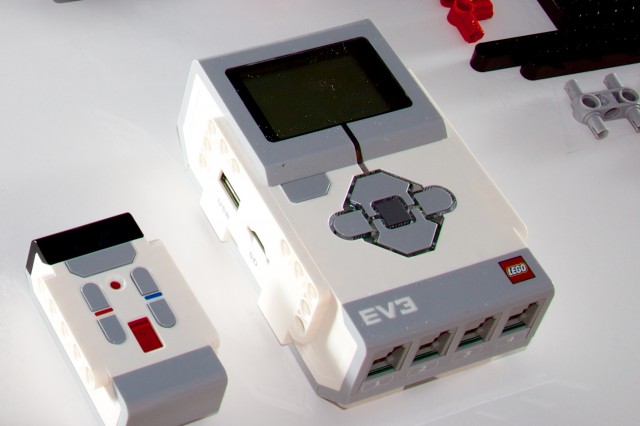
The EV3 set we were given to review contained three different motors (two large and high-torque and one smaller) and three sensors (one touch, one color and light, and one infrared) along with a single control brick. There's also an infrared remote control (an "IR beacon," the manual calls it, since it has a few other functions as well). In total, the set contains 594 Technic-style pieces for actually building things; there's not a studded brick anywhere in the entire box, though, so mixing the EV3 set into your pile of non-Technic Lego bricks will require a bit of ingenuity.
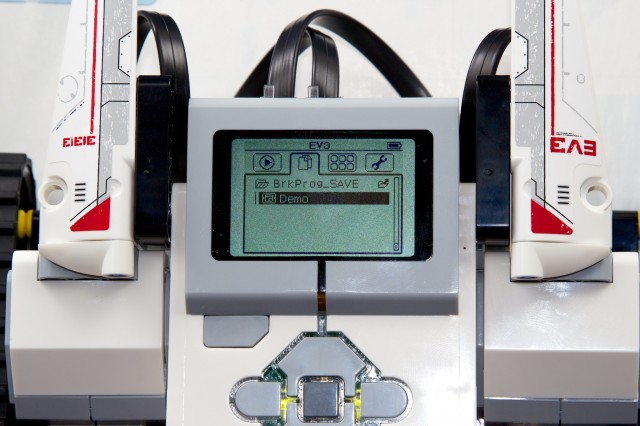
Building things with the EV3 set is no different from building anything with Lego bricks, and I followed a similar procedure: unbox, dump on floor, build the thing in the instructions, look at it for a few minutes, then smash it to pieces and build my own stuff. Actually, that's not entirely correct—there are five separate Lego-provided robot designs that can be built with the set. I put together two of them before going off-script.
The kit comes with printed instructions for the "Track3r" robot, a squat little guy who can be equipped with a number of different attachments and who can shoot things, pick up things, and attack things with a spinny claw. It was a great way to dip my toes into the EV3 pool, though after I'd built the robot, I realized that the "build" part of that pool is definitely the shallow end. The true depth and complexity of this set—and of the Mindstorms line in general—is the programming.

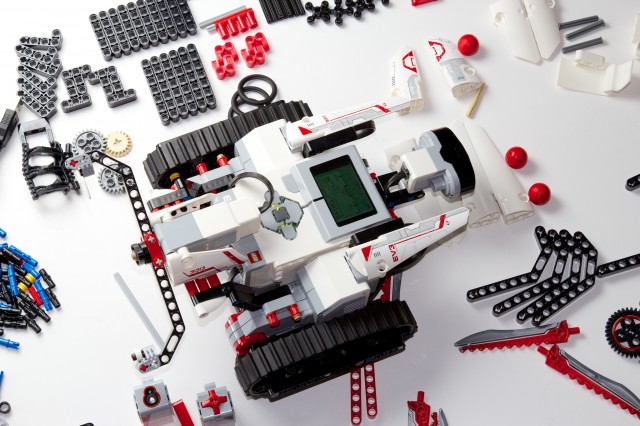
I tore down the Track3r and got to work on the flagship design for the EV3 set, the 16-inch tall "Ev3rstorm" robot. It does a lot more stuff. He comes with pre-written programs to demonstrate some of the more advanced capabilities of the EV3 set: he can roll forward on his treads, detect and move around obstacles, and even shoot little red balls at an infrared target (though his accuracy leaves a bit to be desired). My build time on the robot was just a hair under 2.5 hours.
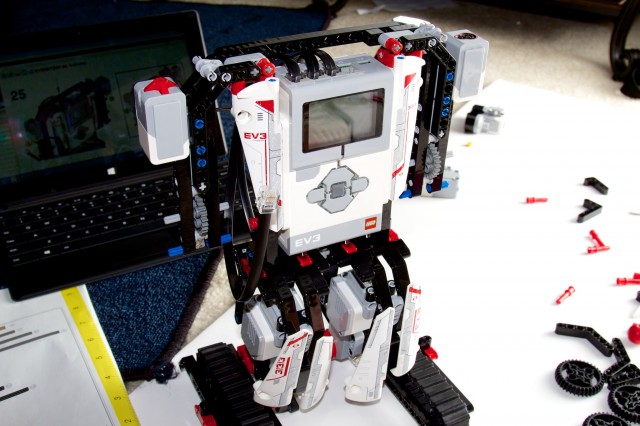
The control brick gets connected to the sensors and motors via a set of included cables. There are eight ports on the brick itself: four on the top for output, which are used to drive motors, and four on the bottom for input, which are connected to sensors. The provided cables terminate in a plastic plug similar to an RJ-12 but with the latch pin relocated left of center. The control brick is capable of recognizing the sensors and motors to which it's connected, and even without programming them, you can use the brick's built-in controls to assign the outputs to buttons on the remote so you can drive your creations around manually. The brick can also flash its lights, display images on its screen, and play digital audio files from its speaker (quite loudly, actually!).
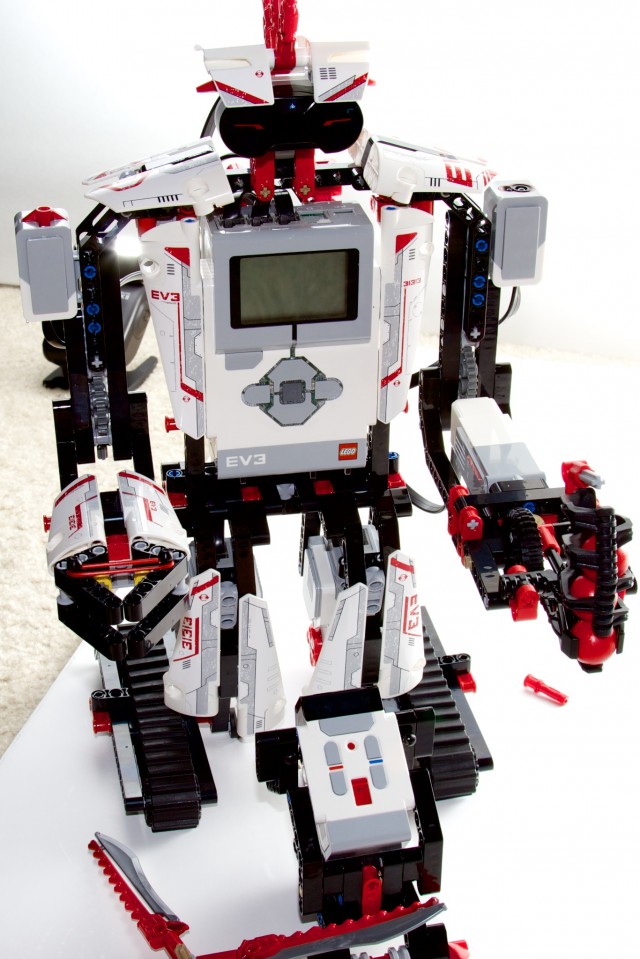
reader comments
148